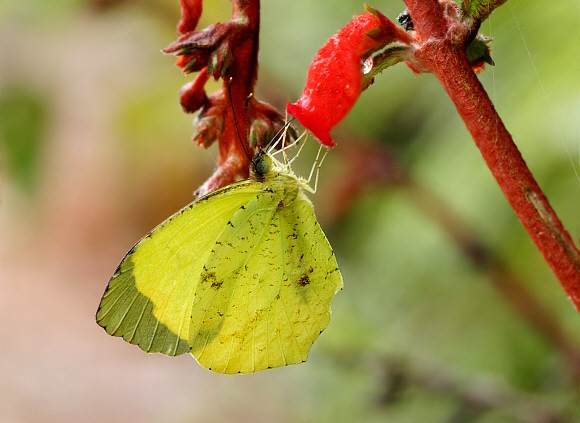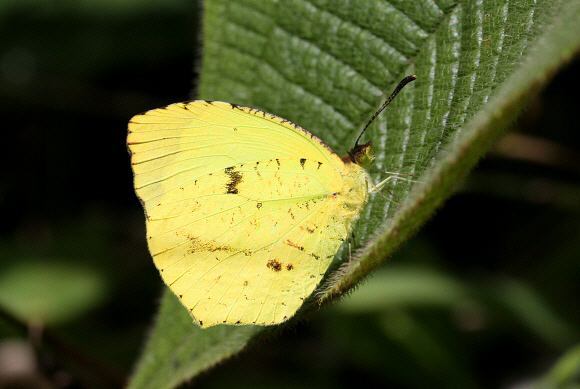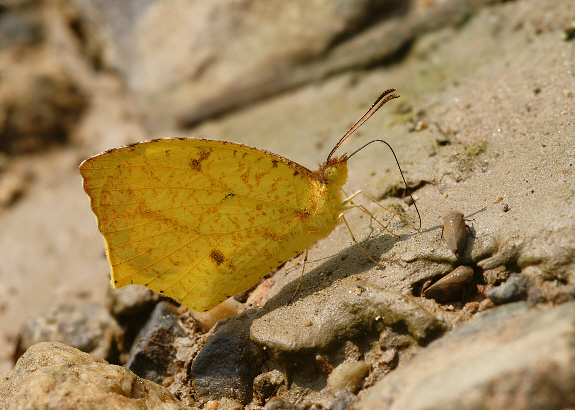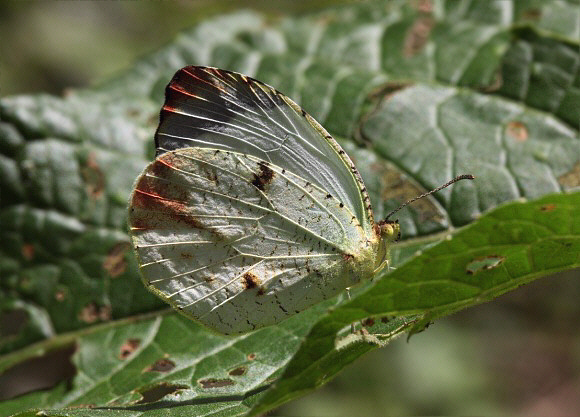
Introduction
Older reference books list Eurema as having about 30 neotropical representatives, but several have now been reclassified in Pyrisitia, leaving a total of 19 currently recognised Eurema species in the neotropical region.
These smallish butterflies are characterised by having yellow or white uppersides, with dark apical markings. The forewings have a strongly curved costa and a squarish apex. The hindwings of many Eurema species are rounded but in xantochlora the termen is projected to a point, which tends to be longer in dry season forms.
E. xantochlora has heavier mottling on the underside than most other Eurema species, but the most reliable diagnostic character is the shape of the black border on the upperside forewing.
Eurema xantochlora occurs from Costa Rica to Bolivia.

Habitats
This species breeds in disturbed semi-open forest edge habitats, including roadsides, riverbanks, secondary forest and farmland at altitudes between 0-1800m.

Lifecycle
Other Eurema species lay their eggs singly on Mimosaceae, Caesalpinaceae, Simaroubaceae or Fabaceae, according to species. The foodplant of xantochlora is unknown. Eurema caterpillars are typically dull green, with a whitish line along the sides, and a rough texture. The pupae are typically pale green or yellowish, with a prominent keel, but I have no data specific to xantochlora.

Adult behaviour
Males are usually encountered singly, or occasionally in two’s or three’s, seen imbibing dissolved minerals from sandbanks, peccary wallows, salt licks and the edges of muddy puddles adjacent to forested areas. Females are more often seen nectaring at flowers along roadsides and riverbanks, or when exploring sunny wood edge habitats in search of egg-laying sites.
The flight is fluttery but fairly rapid, and usually close to the ground.

